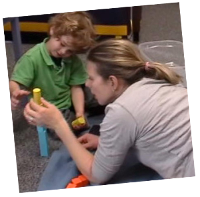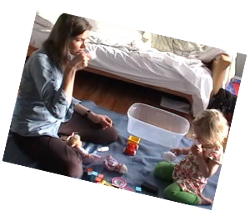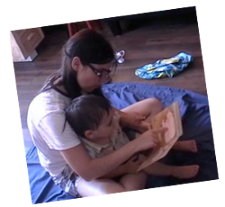Parent interaction and child language development
Parent-child interactions are the foundational forum for language exposure and learning. We know from a wealth of evidence that higher amounts of language input and varied forms of language input provided by parents to their young children during these interactions enhances language development in typical development, which in turn confers long-term linguistic and academic advantages (Hart & Risley, 1995; Hoff & Naigles, 2002; Huttenlocher et al., 1991; Hurtado et al., 2008). These findings reveal that children implicitly keep track of language input, and develop better language abilities when immersed in rich input environments.
There has been less attention paid to the role of parental linguistic input in language development in children on the autism spectrum. A clearer picture of the data that children on the spectrum have available to mine for language learning, as well as of specific relationships between aspects of the input and later language development, are essential for a comprehensive view of factors that contribute to language development in this population.
Our findings, culled from transcription of naturalistic parent-child play interactions, demonstrate that parents of children on the autism spectrum provide similar linguistic environments for their children as do parents of typically-developing children of the same language ability. However, this generally happens at a later chronological age, due to the language delays that are common amongst children on the autism spectrum. Critically, we found that a rich and varied linguistic environment helps children on the autism spectrum build their later vocabulary, as is the case for other children. These findings highlight the key role caregivers and educators can have in the language development of children on the autism spectrum In addition, they have significant implications for intervention approaches to facilitate language development, supporting the use of full and complex rather than simplified language.



Publications
Journal Articles
- Rvachew, S., Rees, K., Carolan, E. & Nadig, A. (2017). Improving emergent literacy with school-based shared reading: Paper versus eBooks. International Journal of Child-Computer Interaction, 12, 24-29. https://doi.org/10.1016/j.ijcci.2017.01.002
- Rees, K., Rvachew, S. & Nadig, A. (2017). Story-related discourse by parent-child dyads: A comparison of typically developing children and children with language impairments. International Journal of Child-Computer Interaction, 12, 16-23. https://doi.org/10.1016/j.ijcci.2017.01.001
- Bang, J. & Nadig, A. (2015). Learning Language in Autism: Maternal Linguistic Input Contributes to Later Vocabulary, Autism Research, 8 (2), 214-223. https://doi.org/10.1002/aur.1440
- Nadig, A., Ozonoff, S., Young, G., Rozga, A., Sigman, M., & Rogers, S. J. (2007). A prospective study of response-to-name in infants at risk for autism. Archives of Pediatrics and Adolescent Medicine, Theme issue on Autism, 161 (4), 378-383.
Book Chapters
- Nadig, A. & Bang, J. (2017). Parental input to children with ASD and its influence on later language. In L. Naigles (Ed.), Language and the human lifespan series. Innovative investigations of language in autism spectrum disorder (p. 89- 113). American Psychological Association; Walter de Gruyter. https://doi.org/10.1037/15964-006
- Rees., K., Rvachew, S. & Nadig, A. (2016). Adults and children make meaning together with e-books. In N. Kucirkova and G. Galloon (Eds.), Apps, technology and young learners: International evidence for teaching. Taylor &Francis/Routledge.
